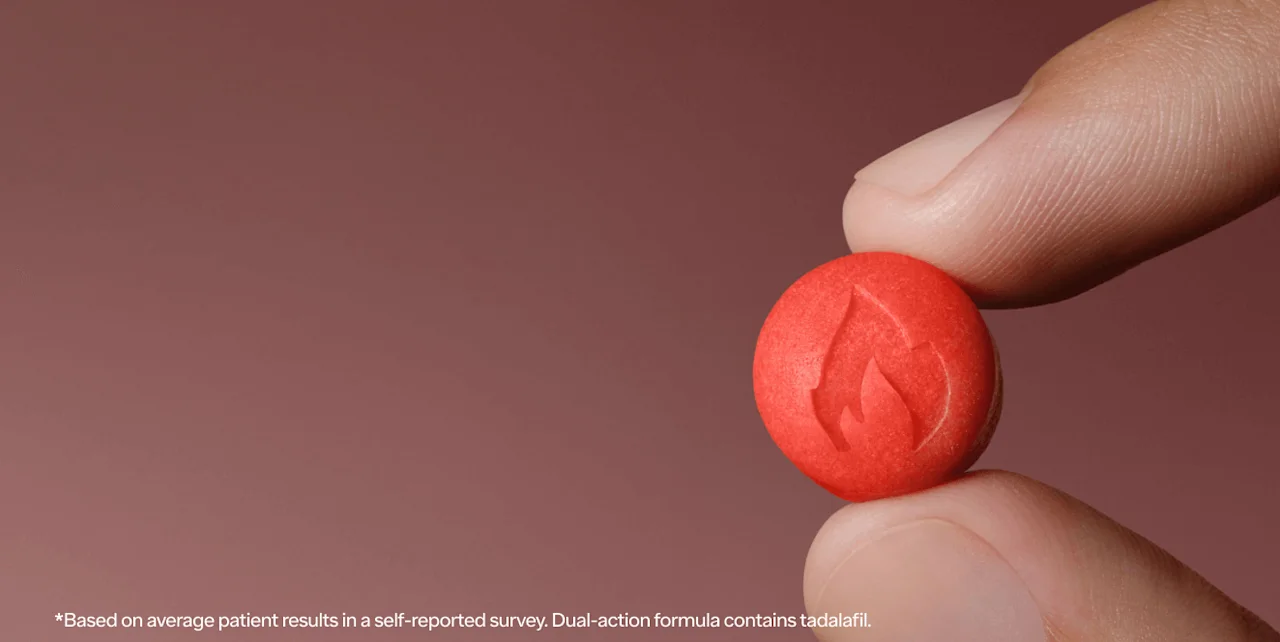Key takeaways
An 8-inch penis is very large, and an estimated less than 0.01% of people have that size. Most studies estimate the average erect length to be approximately 5.5 inches.
Media and pornography can exaggerate what’s “normal,” making eight inches seem more common than it really is.
Managing sex with a larger penis may need more communication, attention to comfort, and sometimes adjustments in positions.
Factors like intimacy, emotional connection, and foreplay consistently matter more for satisfaction than size alone.
Here's what we'll cover
Here's what we'll cover
Here's what we'll cover
Key takeaways
An 8-inch penis is very large, and an estimated less than 0.01% of people have that size. Most studies estimate the average erect length to be approximately 5.5 inches.
Media and pornography can exaggerate what’s “normal,” making eight inches seem more common than it really is.
Managing sex with a larger penis may need more communication, attention to comfort, and sometimes adjustments in positions.
Factors like intimacy, emotional connection, and foreplay consistently matter more for satisfaction than size alone.
When it comes to penis size, curiosity is totally normal. You might be asking, “Is an 8-inch penis big?” The short answer is yes, an 8-inch penis is definitely considered big — less than 0.01% are around this size.
In this article, we tackle all your questions about how rare an 8-inch penis is and what actually matters most for sexual satisfaction.
Is an 8-inch penis big?
An erect penis is considered “big” when it measures well above average. Studies indicate that the average length ranges between 5.1 and 5.5 inches. Penises measuring about 6.3 inches or longer fall into the 95th percentile, and eight inches is less common.
That difference may not sound like much on paper, but in reality, it’s a big jump that places you outside the “average” range where the majority fall.
How rare is an 8-inch penis?
An 8-inch erection is very rare and much larger than the average penis.
According to meta-analysis data, an 8-inch erect penis falls in the 99.99th percentile, meaning only about seven people per million reach that size.
One review found the average erect length to be about 5.2 inches, while another analysis of more than 55,000 put it at 5.5 inches. Research from Argentina, which measured those with a penis across multiple hospitals, showed an average of about six inches.
Put simply, most people fall in the 5–6 inch range, and eight inches is well beyond typical.
How does 8 inches compare to average?
Here’s how eight inches compares with research-based averages:
Erect length | Percentile | What it means |
|---|---|---|
5.2 in | 50th (average) | Half of people are shorter, half longer |
6.3 in | 95th | Only 5 out of 100 people are longer |
8 in | 99.99th | About 1 in 140,000 people are longer |
Why do studies vary so much?
When looking through articles trying to figure out exactly how rare an 8-inch penis is, you’ve probably seen different numbers. Some say the average is six inches; others go even higher. Differences come down to how data is collected, so results depend on how the research was done:
When people measure themselves, the results can be larger than reality, as individuals may measure differently or round up.
When healthcare professionals or researchers measure, the numbers tend to be more accurate, and those studies show the average is closer to five or six inches, still nowhere near eight inches.
Who participates in the studies matters, too. Those who feel good about their size are more confident and likely to volunteer, which can make the averages look bigger than they actually are.
Put all that together, and it explains why the “average” penis size you hear about online often sounds larger than what studies really find.
What is reality vs. expectations for 8-inch penises?
An 8-inch penis may sound like the “ideal” thanks to pornography, locker-room talk, or self-reported surveys online, but the reality is different. Let’s unpack some of the misconceptions about penis size.
“8 inches is the new normal” (it’s not)
An 8-inch penis is not average, and it’s not the “new normal.” Large, professionally measured studies consistently show the typical erect length is about 5–6 inches.
So while you might see bigger sizes in pornography or self-reported surveys, those don’t reflect what most people actually have.
“Women always prefer larger”
Research doesn’t back that up. In one survey of 170 women, more than 75% said penis length wasn’t important for their sexual satisfaction, and just 1% said it was “very important.”
Other studies found women’s preferences were only slightly above average, around 6.3–6.4 inches in length and just under five inches in girth. That’s nowhere near eight inches.
“Size equals sexual success”
Great sex isn’t defined by inches. In interviews with people of different ages and backgrounds, the most common themes for “great sex” were orgasm, emotional connection, and chemistry.
Many said trust and affection helped them enjoy sex more fully. Technique, communication, and how present you are with your partner consistently play a bigger role than size ever could.
“Porn reflects reality”
It doesn’t. Adult films tend to feature those with a penis at the far upper end of the size spectrum, which can skew expectations for what’s “normal.”
According to a large study, the average erect penis is about 5.2 inches, and most are within an inch of that. An erect length of 6.3 inches is already in the 95th percentile, which means only five out of 100 people are longer than that.
This shows that comparing yourself to pornography sets up unrealistic standards that simply don’t match what researchers consistently observe in real-world clinical measurements.
What 8 inches actually looks like
It can be tough to picture what eight inches really means without something to compare it to. In everyday terms, eight inches is about the length of:
An iPad Mini
Two rolls of toilet paper stacked end to end
Three soda cans lined up
The average adult male hand from wrist to fingertip
A medium banana
Seeing it in this context helps explain why eight inches is considered well above average. On a body, how it looks can also depend on girth and proportions, not just length.
Managing sexual experiences with an 8-inch penis
It can be exciting to have an 8-inch penis, but it may also come with challenges that you didn’t expect when having sex. Comfort, safety, and communication become especially important at this size.
Best sex positions for an 8-inch penis
When you’re on the larger side, some positions may feel better than others, not just for you, but for your partner, too. Research looking at sex positions and orgasm found that positions where the receiving partner has more control, like with them on top, or sitting face-to-face, were linked to more consistent orgasms.
Here are some other positions to try:
Your partner on top: This lets them set the pace and decide how much feels good. Drawing your knees up a bit can help keep penetration from going too deep.
Sideways missionary (face-to-face): Lying on your sides facing each other creates a more shallow angle that feels intimate and less overwhelming.
Lap dance: Sitting in a chair or at the edge of the bed with your partner straddling you gives them full control over depth. They can choose whether to ease into it or take more, and you still get plenty of physical closeness.
Some positions allow for very deep penetration and might not feel comfortable with an 8-inch penis:
Doggy style (classic on hands and knees)
Legs-over-shoulders missionary
Standing penetrative positions where control is harder
Of course, these aren’t off-limits, but they may require extra care, slower movements, or modifications to avoid discomfort. No matter which position you choose, the basics matter just as much: take your time with foreplay, use plenty of lube, and check in with your partner as things heat up.
With an 8-inch penis, the most enjoyable experiences usually come from finding positions that balance depth and comfort, while keeping things fun and connected for both partners.
Communication and intimacy
There’s more to sex and desire than penis size. Research shows that emotional intimacy is closely tied to sexual desire, and when you feel connected to your partner, you’re more likely to enjoy sex and want it to happen.
That means taking the time to build closeness through touch or simply talking openly. And no, it doesn’t have to be awkward or kill the mood. It can take just a simple question like:
“Does this feel good?”
“Want me to slow down?”
“Do you like this angle?”
These quick questions give your partner the space to guide the experience. And the truth is, sex doesn’t need to look or feel like it does in movies, where everyone seems to know exactly what the other person wants. In real life, asking and adjusting are normal.
Using lube
For some people, sexual intercourse can be uncomfortable or even painful, resulting in a condition called dyspareunia. While there are many causes for pain during sex, using lubricants can make a difference.
Research shows that using lube is linked with greater comfort and pleasure, whether it’s easing dryness, making sex smoother, or simply reducing friction so both partners can relax.
If you’re on the larger side, you might want to be generous with the lube to help make sex smoother and more enjoyable.
Condom selection and safety
Condom fit is a factor in both comfort and protection. Research shows that penis size, particularly girth, is linked to condom fit issues.
Those with a circumference of 4–6 inches were more likely to say the average condom felt too tight and more likely to report breakage. Those with above-average length also reported similar challenges.
The good news is that different condom sizes and styles exist, and finding the right fit can reduce discomfort and lower the chance of breakage or slippage. A condom that rolls on easily, feels secure without being overly tight, and stays in place is usually the safest choice.
Other considerations if you have a big penis
A larger penis can come with day-to-day challenges outside the bedroom. Some people report difficulty finding clothes that feel comfortable and supportive, or feeling exposed because size is noticeable through pants.
In looser clothing, movement can draw attention, while tighter clothing may create a visible bulge. This visibility can also create some social discomfort. People have described moments when people stare, comment, or even joke about their size, sometimes in public settings.
Experiences like these can lead to feelings of awkwardness, unwanted attention, or vulnerability, even when sex itself isn’t an issue.
When professional help becomes important
Persistent pain or discomfort during sex can affect both physical comfort and emotional intimacy, so addressing it early matters.
Sometimes a larger size can lead to challenges that aren’t always solved with lube or a change in position. If you or your partner regularly feel pain, or if sex results in discomfort or injury, it’s worth checking in with a healthcare provider.
Performance anxiety is another issue that can affect people’s sexual experience, no matter their size. It often starts after a negative sexual experience, like losing an erection, finishing too quickly, or feeling like sex was painful or unsatisfying.
When that happens, it’s easy to expect the same thing to go wrong next time. This kind of negative thinking builds pressure, and the extra stress makes it harder to perform. If things don’t go well again, it reinforces the worry and keeps the cycle going.
Perception can also play a role. Research shows that how someone feels about their penis can matter as much as their physical health.
In one study of nearly 700 people, those who believed their penis was small were more than twice as likely to report ED compared to those who didn’t share that concern, even though their actual size measurements were in the normal range.
Erectile dysfunction (ED) means not being able to get or keep an erection firm enough for sex. Healthcare providers usually consider the problem ED if it lasts for several months, not just occasionally. It’s very common, especially in people over 40, and it can happen at any size.
ED can be linked to conditions like high blood pressure, diabetes, low testosterone, or heart disease, but it can also be influenced by stress, anxiety, or relationship challenges.
For those dealing with ongoing erection issues, medication is often part of the solution. Treatments like tadalafil (the active ingredient in Cialis) can be taken daily in pill or gummy form* to keep you ready for sex. There are also newer combinations, like Ro Sparks,* that dissolve under the tongue and can start working in as little as 15 minutes.
* Though this particular formulation is not US Food and Drug Administration (FDA)-approved, it is composed of active ingredients that have been FDA-approved for ED.
What you can do
If worries about size, performance, or discomfort are starting to take a toll on your sex life or your confidence, it may be time to reach out for support.
A healthcare provider can help you sort through what’s physical and what’s psychological, and give you real options for moving forward.
Bottom line: where an 8-inch penis ranks in size
Penis size might get plenty of attention online, but medical research makes one thing clear: an 8-inch erection is far outside the norm. Here are the main takeaways:
An 8-inch penis is big and rare: The average is just over five inches when erect, and most people are within an inch of that. Even at around 6.3 inches, it is already in the top 5%. This makes eight inches a category so rare it’s practically off the chart.
Women don’t necessarily prefer that length: Studies suggest women’s ideal length is only slightly above average, while about three out of four women say penis size doesn’t affect their sexual satisfaction.
What really matters for sex is connection and comfort: Research helps put things in perspective, but bodies don’t come with a single “right” size, and numbers don’t set the terms for intimacy. Chemistry and communication can go much farther than penis size to help you build a satisfying sexual relationship.
Frequently asked questions (FAQs)
How many men actually have an 8-inch penis?
Very few people have an 8-inch penis. Most measure between five and 5.5 inches when erect, with anything above six inches already landing in the “larger than most” group.
Hitting eight inches puts someone in an extreme outlier category. Researchers estimate that only about 0.01% of people would measure that long.
What is considered a big penis medically?
There isn’t a strict medical definition for a “big” penis, but there are statistical averages. For example, an erect length of 6.3 inches puts you in the top 5% of the population.
Anything above that is progressively rarer, which is why researchers and clinicians often frame “larger than average” in terms of percentiles rather than a fixed definition.
Is an 8-inch penis too big for most partners?
No, an 8-inch penis is not necessarily too big for most partners, but it can present challenges.
For example, studies show that many women’s preferences are just slightly above average, around 6.3 to 6.4 inches in length. Comfort can depend on factors like lube use, sexual positions, and communication.
Do women prefer 8-inch penises?
No, research doesn’t support the idea that most women prefer penises as large as eight inches.
According to a survey, over 75% of women said penis length wasn’t important for their sexual satisfaction, and only 1% said it was “very important.” Factors like communication, foreplay, and emotional intimacy play a bigger role in sexual satisfaction than size alone.
How is penis size measured?
Penis size is usually measured by a health professional with a ruler. It can be done while the penis is soft, gently stretched, or erect, but there can be challenges.
Many studies use soft or stretched measurements. Erect measurements are less common, possibly because erection from sexual arousal may not be easily replicated in other circumstances and may not be feasible for everyone at any given time.
DISCLAIMER
If you have any medical questions or concerns, please talk to your healthcare provider. The articles on Health Guide are underpinned by peer-reviewed research and information drawn from medical societies and governmental agencies. However, they are not a substitute for professional medical advice, diagnosis, or treatment.
Cialis Important Safety Information: Read more about serious warnings and safety info.
References
Belladelli, F., Del Giudice, F., Glover, F., et al. (2023). Worldwide Temporal Trends in Penile Length: A Systematic Review and Meta-Analysis. The World Journal of Men's Health, 41(4), 848–860. doi: 10.5534/wjmh.220203. Retrieved from https://pubmed.ncbi.nlm.nih.gov/36792094/
Cakir, O. O., Pozzi, E., Castiglione, F., et al. (2021). Penile Length Measurement: Methodological Challenges and Recommendations, a Systematic Review. The Journal of Sexual Medicine, 18(3), 433–439. doi: 10.1016/j.jsxm.2020.11.012. Retrieved from https://pubmed.ncbi.nlm.nih.gov/33648901/
Francken, A. B., van de Wiel, H. B., van Driel, M. F., et al. (2002). What importance do women attribute to the size of the penis?. European Urology, 42(5), 426–431. doi: 10.1016/s0302-2838(02)00396-2. Retrieved from https://pubmed.ncbi.nlm.nih.gov/12429149/
Goel, P., Choudhury, P., Saroya, K.K., et al. (2024). Advancing Precision in Penile Length Measurement: Evidence-based Synthesis of Stretched Penile Length INdicator Technique (SPLINT). Journal of Indian Association of Pediatric Surgeons, (5), 492-504. doi: 10.4103/jiaps.jiaps_11_24. Retrieved from https://pmc.ncbi.nlm.nih.gov/articles/PMC11521232/
Grov, C., Wells, B. E., & Parsons, J. T. (2013). Self-reported penis size and experiences with condoms among gay and bisexual men. Archives of Sexual Behavior, 42(2), 313–322. doi: 10.1007/s10508-012-9952-4. Retrieved from https://pmc.ncbi.nlm.nih.gov/articles/PMC5826649/
Habous, M., Muir, G., Soliman, T., et al. (2017). Outcomes of variation in technique and variation in accuracy of measurement in penile length measurement. International Journal of Impotence Research, 30(1), 21-26. doi: 10.1038/s41443-017-0013-3. Retrieved from https://pmc.ncbi.nlm.nih.gov/articles/PMC8519169/
Kennedy, C. E., Yeh, P. T., Li, J., et al. (2021). Lubricants for the promotion of sexual health and well-being: a systematic review. Sexual and Reproductive Health Matters, 29(3), 2044198. doi: 10.1080/26410397.2022.2044198. Retrieved from https://pmc.ncbi.nlm.nih.gov/articles/PMC8942543/
King, B.M. (2021). Average-Size Erect Penis: Fiction, Fact, and the Need for Counseling. Journal of Sex & Marital Therapy, 47(1), 80–89. doi: 10.1080/0092623X.2020.1787279. Retrieved from https://pubmed.ncbi.nlm.nih.gov/32666897/
Krejčová, L., Kuba, R., Flegr, J., et al. (2020). Kamasutra in Practice: The Use of Sexual Positions in the Czech Population and Their Association With Female Coital Orgasm Potential. Sexual Medicine, 8(4), 767–776. doi: 10.1016/j.esxm.2020.07.003. Retrieved from https://pmc.ncbi.nlm.nih.gov/articles/PMC7691886/
Leslie, S. W. & Sooriyamoorthy, T. (2024). Erectile Dysfunction. StatPearls. Retrieved on Sep. 29, 2025 from https://pubmed.ncbi.nlm.nih.gov/32965924/
Malhi, G. S. & Bell, E. (2022). Questions in psychiatry (QuiP): Psychological basis for sexual dysfunction in psychiatry. Bipolar Disorders, 24(8), 830–833. doi: 10.1111/bdi.13273. Retrieved from https://pmc.ncbi.nlm.nih.gov/articles/PMC10099618/
MeasureScopez. (2025). 11 common things that are 8 inches long. Retrieved from https://measurescopez.com/how-long-is-8-inches/
Mostafaei, H., Mori, K., Katayama, S., et al. (2025). A Systematic Review and Meta-Analysis of Penis Length and Circumference According to WHO Regions: Who has the Biggest One?. Urology Research & Practice, 50(5), 291–301. doi: 10.5152/tud.2025.24038. Retrieved from https://pmc.ncbi.nlm.nih.gov/articles/PMC11923605/
Prause, N., Park, J., Leung, S., et al. (2015). Women's Preferences for Penis Size: A New Research Method Using Selection among 3D Models. PloS One, 10(9), e0133079. doi: 10.1371/journal.pone.0133079. Retrieved from https://pmc.ncbi.nlm.nih.gov/articles/PMC4558040/
Sanches, B. C., Laranja, W. W., Alonso, J. C., et al. (2018). Does underestimated penile size impact erectile function in healthy men?. International Journal of Impotence Research, 30(4), 158–162. doi: 10.1038/s41443-018-0039-1. Retrieved from https://pubmed.ncbi.nlm.nih.gov/29925936/
Solé, M., González, I. T., Compagnucci, M., et al. (2022). Reference penile size measurement and correlation with other anthropometric dimensions: a prospective study in 800 men. Asian Journal of Andrology, 24(6), 620–623. doi: 10.4103/aja2021121. Retrieved from https://pubmed.ncbi.nlm.nih.gov/35381693/
Tayyeb, M. & Gupta, V. (2023). Dyspareunia. StatPearls. Retrieved on Sep. 29, 2025 from https://www.ncbi.nlm.nih.gov/books/NBK562159/
van Lankveld, J., Jacobs, N., Thewissen, V., et al. (2018). The associations of intimacy and sexuality in daily life: Temporal dynamics and gender effects within romantic relationships. Journal of Social and Personal Relationships, 35(4), 557–576. doi: 10.1177/0265407517743076. Retrieved from https://pmc.ncbi.nlm.nih.gov/articles/PMC5987853/
Veale, D., Miles, S., Bramley, S., et al. (2015). Am I normal? A systematic review and construction of nomograms for flaccid and erect penis length and circumference in up to 15,521 men. BJU International, 115(6), 978–986. doi: 10.1111/bju.13010. Retrieved from https://pubmed.ncbi.nlm.nih.gov/25487360/
Walker, A. M. & Lutmer, A. (2023). Caring, Chemistry, and Orgasms: Components of Great Sexual Experiences. Sexuality & Culture, 1-22. doi: 10.1007/s12119-023-10087-x. Retrieved from https://pmc.ncbi.nlm.nih.gov/articles/PMC10164420/













